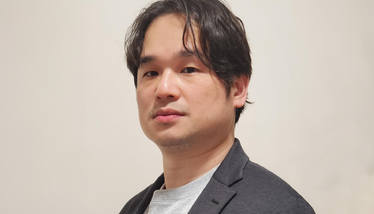The Era of Complex Biologics
Four approaches to address the challenge of producing complex therapeutics in standard cell lines
Eric Chang | | 4 min read

Drug developers can use various techniques to significantly enhance a cell line’s ability to produce a safe and stable biologic in substantial quantities. But as the industry moves towards more complex biologics, drug developers must implement even more robust cell line development (CLD) processes to ensure the efficient production of difficult-to-express protein therapeutics.
Although mAbs continue to dominate the biologics pipeline in 2024, representing the largest and predominant class of therapeutic proteins in clinical use, other recombinant-protein products are on the rise. Bispecific antibodies (bsAbs), Fc-engineered antibodies, antibody-drug conjugates (ADCs), single-chain variable fragments (scFvs), and single-domain antibody fragments (or “nanobodies”) are all emerging as the next generation of biologics with the advantages of improved targeting, functionality, tumor penetration, pharmacokinetics, and reduced immunogenicity.
Non-mAb therapies are typically difficult to express and linked to low productivity. In particular, the molecular geometry of asymmetric bsAbs can encourage the formation of antibody-related impurities – caused by co-expression of the different antibody chains (1). But, as always, increasing productivity is important to reduce cost and time of production.
There are several approaches that drug developers can consider when it comes to optimizing CLD for difficult-to-express biologics in mind. Here, I consider four.
1. Genetic engineering
The cornerstone of biologic manufacturing is the development of a robust cell line capable of delivering efficient, reliable, and consistent production. When selecting a cell line, careful consideration must be given to the specific biologic to ensure a suitable match.
Though numerous cell lines have been engineered for biologic manufacture, CHO cells continue to be a popular choice, accounting for over 70 percent of recombinant proteins produced (2). CHO cell lines are closely conserved with nature and tolerate changing environmental conditions well. They are also easily scaled and well-understood, with extensive literature available.
As they are artificially designed, complex biologics like non-mAb proteins will often have lower expression levels in CHO cells. Biologics developers can consider altering the core cell line DNA to address these challenges to increase control over cellular apoptosis and cell cycle progression (to avoid early cell death), as well as cellular chaperones and ribozymes (for proper post-translational modification of antibodies). This can be achieved using genome editing techniques, such as CRISPR-Cas, zinc finger nucleases (ZFNs), or transcription activator-like effector nucleases (TALENs) (3).
Introducing genes for chaperone protein production can help improve protein solubility and, in turn, increase product yield (3). Alternatively, engineering cells to improve the volume of recombinant protein production at low temperatures can also benefit CHO-based expression systems. By expressing at reduced temperatures, the solubility, stability, and biological activity of recombinant proteins, especially those prone to aggregation or misfolding, can be significantly improved compared with expression at 37 °C (4).

2. Selecting appropriate signal peptides
Signal peptides direct the nascent protein into the secretory pathway for proper folding and post-translational modifications – both of which are critical for the final product’s efficacy, safety, and quality.
Incorrect signal peptides can lead to improper processing, resulting in heterogeneous N-terminal sequences and impacting the product’s integrity. Inefficient translocation caused by suboptimal signal peptides can also result in cytoplasmic accumulation of the protein, leading to aggregation and degradation (5).
Different signal peptides have varying efficiencies in targeting the protein to the secretory pathway. When producing difficult-to-express proteins, drug developers must carefully optimize the signal peptide to enhance the secretion levels and overall yield of the recombinant protein produced.
3. Codon optimization algorithms
Using codon optimization algorithms, drug developers can design synthetic gene sequences that maximize protein expression in the chosen specific host organism. Options include:
- identifying and replacing rare codons in the coding sequences with synonymous codons preferred by the expression host, like CHO cells, to improve overall expression yield
- influencing local translation rates, which in turn impacts co-translational folding and assembly
- promoting homogeneous expression of the desired bispecific form, reducing heterogeneous byproducts
Machine learning approaches, such as recurrent neural networks and deep learning, are now being used to learn the codon usage patterns from genomic data and predict optimal codons (6).
4. Non-genetic optimization
In addition to genetic manipulation, non-genetic optimization of an existing CHO cell line can enhance productivity by employing factors, such as low temperature, pH control, media selection, and feeding strategy. These process optimizations work synergistically to maximize the expression potential of native CHO production cell lines. However, because different clones exhibit varying responses to changes in cell culture processes, it is essential to conduct a design of experiment (DoE) to evaluate multiple CHO cell lines. Developing a scale-down cell culture model that accurately represents at-scale production is the foundation of the DoE.
As the number of non-mAb biologics in the pipeline increases, drug developers and manufacturers must prepare for significant challenges presented by expression. By optimizing the CLD process, drug developers can increase the titer of difficult-to-express biologics, reduce production costs and time, and ultimately bring these innovative therapies to patients.
- AV Madsen et al., “Design and engineering of bispecific antibodies: insights and practical considerations,” Front. Bioeng. Biotechnol., 12 (2024). DOI: 10.3389/fbioe.2024.1352014
- M You et al., “Efficient mAb production in CHO cells with optimized signal peptide, codon, and UTR,” Appl. Microbiol. Biotechnol., 102, 5953-5964 (2018). DOI: 10.1007/s00253-018-8986-5
- AK Dangi et al., “Cell line techniques and gene editing tools for antibody production: A Review,” Front. Pharmacol., 9, 630 (2018). DOI: 10.3389/fphar.2018.00630
- SK Yoon et al., “Adaptation of Chinese hamster ovary cells to low culture temperature: cell growth and recombinant protein production,” J. Biotechnol., 122, 463-472 (2006). DOI: 10.1016/j.jbiotec.2005.09.010.
- J Dumont et al., “Human cell lines for biopharmaceutical manufacturing: history, status, and future perspectives,” Critical Reviews in Biotechnology, 36, 1110-1122, (2016). DOI: 10.3109/07388551.2015.1084266
- R Jain et al., “ICOR: improving codon optimization with recurrent neural networks,” BMC Bioinformatics, 24 (2023).
Technical Solutions at Bora Biologics



















